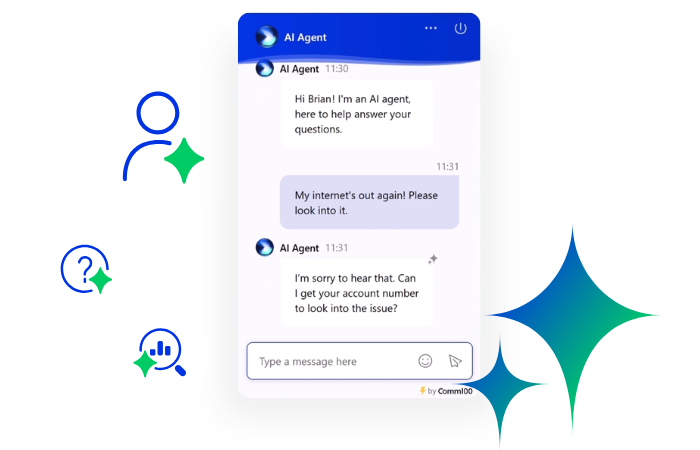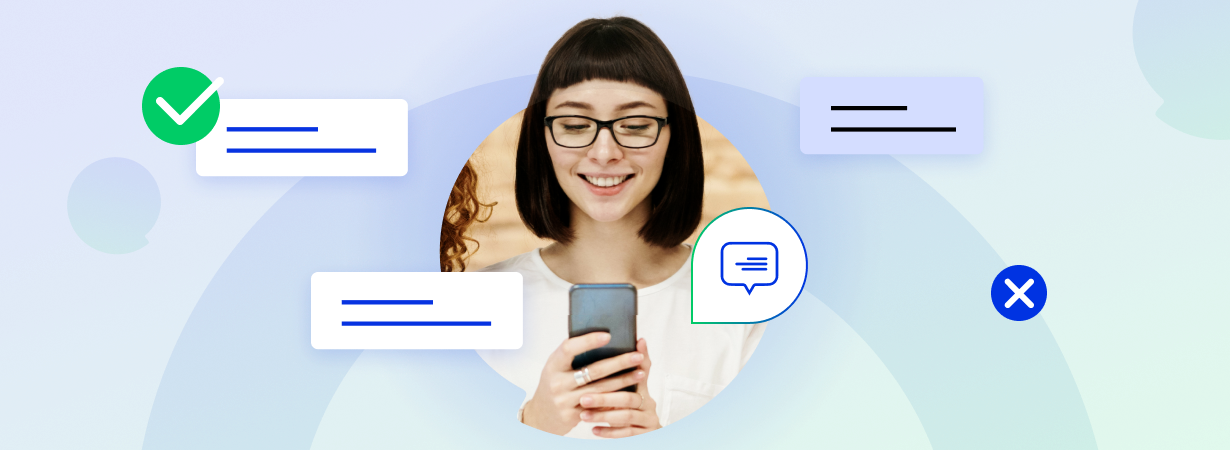Customer Contact Week (CCW) Digital’s special reports are a great resource to catch up on the latest technology, best practices, and trends for the customer contact community. Their recent Live Chat Special Report was no exception – offering insight into best practices, avoiding pitfalls, and how companies can tap into live chat’s full potential. In this report, they state how live chat can bring meaningful conversations online and offer customer-first service with high efficiency.
Unfortunately, as they point out, most organizations are not taking full advantage of the technology due to flaws in strategy, technology, and execution. Instead of becoming the promised real-time, frictionless contact center channel that everybody claims live chat to be, the typical live chat experience is neither customer-first nor efficient.
We’ve summarized the key points of the report, focusing not on why you should invest in live chat, but how to fully maximize live chat benefits for your customers, agents, and business.
- Three questions to consider when building your live chat strategy
- Six metrics for evaluating live chat
- Five ways to ensure live chat agent success
- Four mistakes that are hurting the live chat experience
Three questions to consider when building your live chat strategy
- “Why – and in what context – will contact centers use live chat?”: Like any technological investment, contact centers need to consider how live chat will be used and why. Thanks to its flexible nature, live chat can be used for sales, marketing, or even support. But without a clear goal or purpose, deciding everything from staffing to script development and performance metrics becomes difficult.
- “How will live chat fit into the overall customer experience journey?”: The first step to identifying where live chat fits into the customer journey is deciding where live chat will be placed. Depending on the use case, sales, support or both, the way that chats commence will vary between organizations. There’s also the question of how chats will integrate with other channels. While some of the standard placements include the Contact Us page, or product pages, chat can link up with other channels like voice as an IVR deflection tool.
- “How will automation play a role in live chat?”: Live chat comes with a host of features, like canned messages, that can make answering FAQs easier and faster. Depending on the context, nature of the product, and audience, companies need to decide to what extent they’ll be using automated features. These can range anywhere from low use like automatic replies, to full automation through chatbot.
Bottom-line: In order to tap into the full strength of live chat, companies should be implementing the tool with a clear goal and transparent processes and procedures. Thorough planning and setting solid goals is the foundation of designing and defining the mechanics of a great live chat experience.
Six metrics for evaluating live chat
- Wait time: Customers expect fast answers due to the immediacy of live chat. The benchmark for wait times in 2018 was 37 seconds. Analysing wait time data can help businesses determine staffing needs. If the wait is long, companies need to increase the number of live chat agents or increase the maximum chat allowance per agent. If the wait time is high only during specific times of the day, or even during specific months of the year, consider adding seasonal agents to help tackle the spikes.
- Transfer rate: Examining transfer rate provides different opportunities for improvement, depending on the reasons for the transfer. Some transfers can be avoided by training and enabling agents to answer a wider range of queries, while others can show customer dissatisfaction issues. If you have a high transfer rate, fixing the underlying causes can result in both decreases to handle time and increases in customer satisfaction.
- Accuracy: Visitors who use live chat want fast, accurate service. Low chat accuracy means that customers have to get back in touch to get the answers they need, or they may give up trying to resolve their situation completely. To combat this, businesses need to be sure that the chat live chat agents have received adequate training and are backed by a solid knowledge base to help them answer queries correctly, the first time round.
- First Contact Resolution (FCR): A standard metric for any call center, prioritizing FCR for live chat is extremely effective in avoiding repeat contacts; reducing queue wait times, and increasing customer satisfaction by reducing customer effort.
- Chat Abandonment: High chat abandonment means that instead of providing quick, efficient service through live chat the way it’s intended to be used, there are friction points between the agent and the customer. This can stem from anything like low live chat accessibility, or the amount of effort it takes to start and get answers through chat. For live chat to be considered an effective channel, businesses should aim to keep their chat abandonment rate low.
- Customer Satisfaction: While contact centers should be measuring customer satisfaction across all channels, live chat makes it easy with a post-chat customer satisfaction survey. Encouraging customers to take the survey will ensure you receive a consistent, accurate spectrum of feedback to gauge live chat success.
Bottom-line: Live chat should be held to the same performance standard, albeit through different metrics, as other contact center channels. Companies should be using these metrics to improve the live chat experience through not only measuring live chat ROI but also implementing efficient workflows and processes.
Powerful live chat software
Offer real-time, personalized, efficient support that your customers and agents will love at 1/3 the cost of voice support.
Learn more
Comm100 Live Chat
Five ways to ensure live chat agent success
- Provide context for each customer interaction: As agents begin the conversation, they need insight into who they’re chatting to and how to best resolve customer queries. Live chat should be integrated into your customer relationship management (CRM) tool, so an agent never has to leave their screen to look up information.
- Use automation to augment conversations: The optimal live chat guides agents with recommended comments, answers, and follow-up questions. Thorough scripting and powerful AI capabilities increase agent productivity while leaving room to deliver a human approach when needed.
- Leverage robust, chat-specific analytics: Chat-specific analytics give you insight into not only agent performance, but also how live chat stacks up against corporate objectives. Identifying what’s working and what’s not can help diagnose performance issues, improve scripts, rework processes and optimize coaching.
- Provide relevant, digital-minded coaching: Live chat has certain performance goals and conversational approaches that require specialized training. When hiring, training, and coaching agents, businesses need to specifically prepare agents to thrive in a digital real-time environment using analytics and technology.
- Efficiently manage workflows: Agents should be logging certain aspects of their interactions in a post-chat wrap-up to cultivate customer and product intelligence. Rather than have agents spend time manually inputting this data, companies can automate and train agents to handle this task more efficiently.
Bottom-line: Agent success equals live chat success. Empowering your live chat agents through training and clear expectations will help them perform to the best of their abilities. Your front-line agents drive live chat conversations, how a customer perceives agent performance is an important measure of live chat success.
Four mistakes that are hurting the live chat experience
- Robotic, wasteful questions: It is never acceptable to subject customers to robotic and wasteful questions that agents should already have the answer to. Asking customers to provide basic information, like their account number or their full name, when already on a chat will frustrate them and may cause them to abandon the chat. Agents should avoid appearing like “human IVRs” and go by the golden rule of “if the question feels unnatural during a phone call, it’s inappropriate for chat”.
- Not having customer context: Live chat should seamlessly integrate into your business’ tech stack and give agents all the customer information they need to handle complex queries. If agents do not seem prepared to immediately offer a solution, it can negatively affect the customer’s perception of service quality.
- Chatbots that don’t work: Riding on the chatbot trend, many businesses have started to use bots to handle chats. However as mentioned in the CCW Live Chat Special Report by Meredith Flynn-Ripley, VP Digital Engagement for Salesforce “Even great chatbot interactions will need an agent in 30% – 40% of cases”. Chatbots and agents should be working hand-in-hand to elevate the customer experience. Bots should be equipped with smart triggers to refer customers to agents as a safety-net, rather than bringing the customer to the dead-end of a decision tree.
- Platform constraints: While businesses think channel, customers don’t. Beyond native chat on a website or mobile app, businesses should be offering a real-time communication option through every channel. Whether that be IVR deflection through chat, or servicing customers through social media, businesses should aim to maximize convenience wherever customers want to engage.
Bottom-line: When done incorrectly, live chat can actually end up creating negative customer experiences. These negative customer experiences can end up increasing cost-per-interaction and contribute to customer churn. Customer-centric organizations should avoid these pitfalls to provide frictionless customer experiences.







